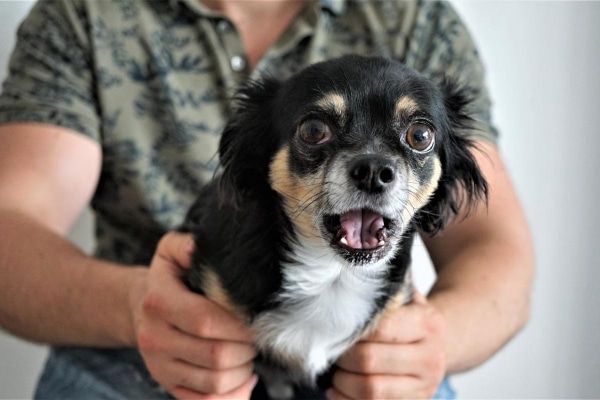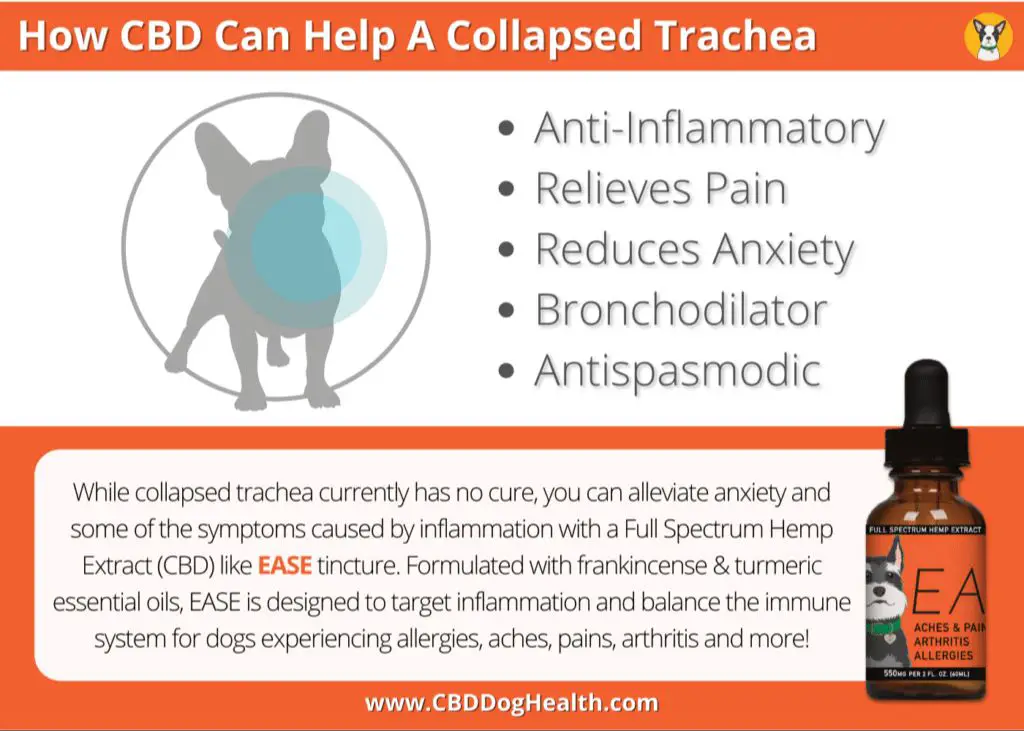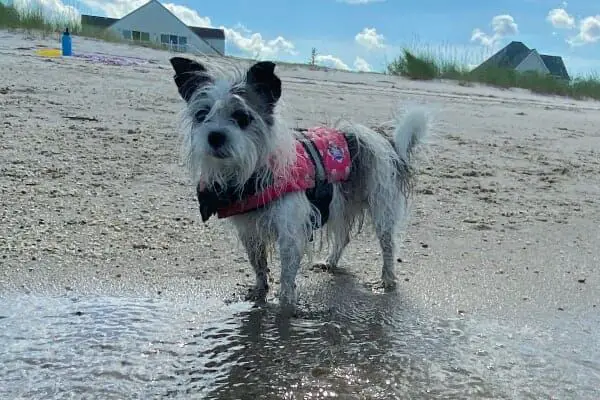Introduction
Collapsed trachea, also known as tracheal collapse, is a condition in which a dog’s trachea weakens and collapses, narrowing the airway and making breathing difficult. It is most commonly seen in small and toy breeds like Chihuahuas, Pomeranians, Yorkshire Terriers, and Poodles. The trachea is a tube made of rings of cartilage that runs from the larynx down the neck and into the chest cavity, acting as the pathway for air to get into and out of the lungs. In dogs with collapsed trachea, these cartilage rings weaken and flatten, causing the trachea to collapse and squeeze shut when the dog breathes in. This obstruction of airflow leads to a characteristic “goose honk” cough, breathing problems, and even collapse episodes in severe cases.
Breeds Prone to Collapsed Trachea
Certain breeds of dogs are more susceptible to collapsed trachea than others. This is typically seen in smaller breed dogs that have short, narrow tracheas. The most common breeds affected are:
- Chihuahuas – The tiny size of their windpipes makes them especially prone to collapse
- Pomeranians – Their small stature and tendency to have tracheal hypoplasia puts them at high risk
- Poodles – Particularly miniature and toy poodles are predisposed
- Yorkshire Terriers – Their petite frames and delicate tracheas make collapse a concern
- Maltese – The compact size of this breed often leads to airway issues
While collapsed trachea can occur in any breed, these toy breeds are most commonly affected due to their small, fragile tracheal structures. Their narrow windpipes are unable to withstand much pressure or force before collapsing and obstructing normal breathing.
Symptoms

A collapsed trachea can cause various symptoms in affected dogs, with the most common being:
Dry Cough
One of the classic signs of a collapsed trachea is a dry, honking cough. This cough may occur randomly or be triggered by excitement, exercise, pulling on the leash, or drinking water.
Wheezing
The narrowed windpipe causes affected dogs to wheeze or make whistling sounds as they breathe in and out. You may notice this especially when they are active.
Gagging
Some dogs will gag or make choking noises as the trachea collapses. This can occur while eating or drinking.
Exercise Intolerance
Dogs with a collapsed trachea often have difficulty exercising for long periods of time. They may seem to tire easily or be unable to keep up on walks.
Causes
Certain dog breeds are genetically predisposed to developing a collapsed trachea. These breeds often have cartilage that is softer and more prone to weakening. The most common breeds with this genetic tendency include:
- Chihuahuas
- Yorkshire Terriers
- Pomeranians
- Poodles
- Miniature poodles
In these predisposed breeds, the tracheal rings of cartilage meant to hold the airway open can progressively weaken over time. Factors that contribute to cartilage deterioration include:
- Age – Cartilage weakens as dogs get older
- Obesity – Excess weight puts more pressure on the trachea
- Inflammation – Tracheal inflammation can damage cartilage
- Heart disease – Increased blood pressure can stress the trachea
As the cartilage rings weaken, they are no longer able to withstand pressure or properly support the trachea. This allows the airway to collapse and close up.
Diagnosis
Diagnosis of a collapsed trachea begins with a veterinarian performing a physical examination of the dog and listening to its breathing with a stethoscope. The veterinarian will likely hear a characteristic honking cough and whistling sound as the dog breathes.

The most common diagnostic tests used to confirm a collapsed trachea are:
X-rays: Chest x-rays can reveal a narrowed trachea and show if the tracheal rings have collapsed. X-rays allow the veterinarian to evaluate the length and location of the collapsed portion of the trachea.
Bronchoscopy: This procedure involves inserting a tiny camera on the end of a long flexible tube down the dog’s throat to visualize the trachea. It provides a clear view of the interior of the trachea to see exactly which rings have collapsed and determine the severity of the condition.
In some cases other tests such as an echocardiogram may be recommended to check for underlying heart disease which can contribute to a collapsed trachea.
Treatment
There are several treatment options for dogs with collapsed trachea, including medications, surgery, and lifestyle changes.
Medications
Medications can help manage collapsed trachea in dogs by reducing inflammation and opening up the airway. Common medications include:
- Cough suppressants to reduce coughing and irritation
- Steroids like prednisone to reduce inflammation
- Bronchodilators to open up the airways
- Antibiotics if there is a secondary infection
Medications can provide relief of symptoms but do not cure the condition. They may be used short-term when symptoms flare up or long-term to manage the tracheal collapse.
Surgery
Surgery is often the best option for treating severe collapsed trachea in dogs. There are a few different surgical techniques that may be used:
- Tracheal ring prostheses – plastic rings are implanted to open up the trachea
- Stent placement – a tiny tube is placed into the trachea to keep it open
- Tracheal resection and anastomosis – removing the collapsed portion of the trachea and reconnecting the healthy ends
Surgery can strengthen and stabilize the trachea, and provide a cure in many cases. However, it is a major procedure and not without risks.
Lifestyle Changes
Making lifestyle changes can help minimize irritation to the airways and reduce flare-ups of collapsed trachea:
- Use a harness instead of a collar
- Limit strenuous activity and exercise
- Use a humidifier to keep airways moist
- Avoid very hot and humid weather
- Maintain a healthy weight to reduce pressure on the trachea
While lifestyle changes alone don’t cure collapsed trachea, they can be a critical part of managing it.
Medications

Medications that may be prescribed by your veterinarian to help manage collapsed trachea in dogs include:
Cough suppressants: Drugs like butorphanol or hydrocodone may help suppress your dog’s cough and make them more comfortable. These medications act on the brain to decrease the cough reflex.
Bronchodilators: Medications like theophylline help open up the airways and make it easier for your dog to breathe. Bronchodilators relax the muscles around the trachea to improve airflow.
Steroids: Corticosteroids like prednisone help reduce inflammation associated with collapsed trachea. By decreasing swelling around the trachea, steroids can potentially improve breathing and reduce irritation.
Your vet will determine the appropriate medications for your dog based on factors like breed, age, symptoms, and degree of tracheal collapse. Always give medications exactly as prescribed and monitor your dog closely for any side effects.
Surgery
There are two main surgical options for treating a collapsed trachea in dogs:
Tracheal Stenting
Tracheal stenting involves placing a tiny tube inside the trachea to help keep it open. This stent acts as a scaffold to support the weakened tracheal rings. The stent is inserted through the mouth and into the trachea using a deployment system. Tracheal stenting is a minimally invasive procedure and is typically done under light anesthesia.
Advantages of tracheal stenting include shorter surgery and recovery times compared to other surgical options. Stents can provide immediate improvement in breathing ability. However, there are some potential complications including stent migration, development of granulation tissue, and continued coughing.
Tracheal Resection and Anastomosis
This surgery involves removing the portion of the trachea that has collapsed and stitching the remaining ends back together. It is a more invasive procedure that requires heavy anesthesia and an incision in the neck. The dog will have a longer recovery time.
The main advantage of tracheal resection and anastomosis is that it provides a permanent fix for the collapsed trachea by physically removing the affected portion. The main disadvantage is that it involves major surgery. There are also potential complications like development of scar tissue, wound infections, and continued coughing.
The surgeon will determine the best surgical approach based on the location and severity of the tracheal collapse, the dog’s overall health status, and other factors.
Lifestyle Changes
Making some simple lifestyle changes can help reduce the chance of a collapsed trachea in susceptible breeds and minimize symptoms in dogs already affected.
One of the most important changes is to use a harness instead of a collar for walking and leash-training. The pressure from pulling or jerking on a collar can irritate and damage the trachea. Switching to a comfortable harness removes pressure from the neck and reduces stress on the airway.
Helping your dog maintain a healthy weight is also essential. Excess weight puts more pressure on the trachea and lungs, making breathing more difficult. Creating a balanced diet, controlling portions, and providing regular exercise will keep your dog trim and minimize trachea strain.
Additionally, taking steps to prevent overheating and keep your dog cool in warm weather is key. Overexertion and heat stress can exacerbate breathing issues. Make sure your dog has access to shade, plenty of cool water, and limit exercise on hot humid days.
Prognosis
The prognosis for a dog with a collapsed trachea can vary greatly depending on the severity of the condition. Mild cases of tracheal collapse may respond very well to medical management alone and the dog can go on to live a relatively normal life. More severe cases often require surgery in addition to medications and lifestyle changes.
With appropriate treatment, most dogs with a collapsed trachea can live a comfortable, good quality of life. However, the prognosis tends to be more guarded for very severe collapse, dogs who develop secondary complications like pneumonia, or those who do not respond well to medications or surgery. Close monitoring and follow-up care with a veterinarian is important.

Overall, the prognosis for tracheal collapse is quite variable depending on the individual case. But with proper diagnosis and treatment, many dogs can go on to manage this condition successfully.